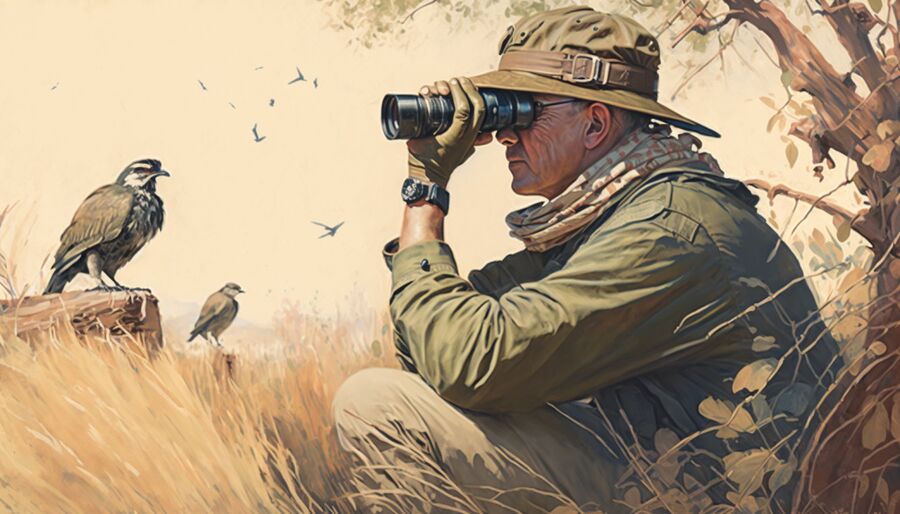
Fly High with These 10 Tips to Becoming a Brilliant Birder

Stick to these tips and you will be a Happy Birder
1. Equip Yourself for Birdwatching Success
One of the essential things to have for birdwatching is the right equipment. The right equipment can help you observe birds in detail and make accurate identifications. The essential equipment for birding includes binoculars, a field guide, and a notebook.
Binoculars are an indispensable tool for birdwatching. When choosing binoculars, look for ones with a magnification of 8x to 10x and an objective lens of 32mm to 42mm. These specifications provide a good balance between magnification and field of view, making it easier to observe and identify birds in the wild.
A field guide is also an essential tool for identifying birds. A field guide is a book that contains pictures, descriptions, and information about different bird species. Look for a field guide that covers the birds in your area and has high-quality pictures and detailed descriptions.
A notebook is useful for recording your sightings, notes, and observations. You can use a notebook to record the date, location, and species of the birds you see. Over time, you can use your notes to track patterns and changes in bird populations.
In today's digital age, there are also many birdwatching apps available that can serve as a Field Guide and help you Record your Sightings. Some apps can even identify birds based on their songs or calls, making it easier to identify species even if you can't see them clearly. Do some research and find the tools that work best for you, and don't be afraid to try out new equipment and apps as you continue to develop your birdwatching skills.
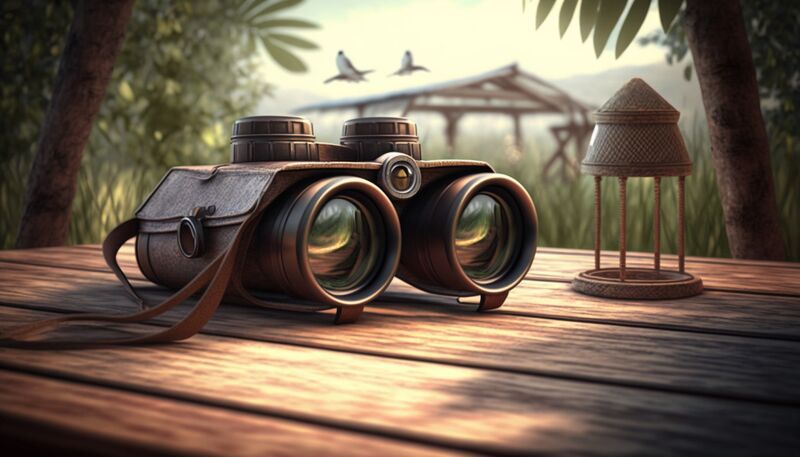
A good pair of binoculars is your most critical piece of equipment
2. Learn About Bird Behavior
Understanding bird behavior is essential for identifying different bird species. Birds have distinct behaviors that can help you identify them even if you don't get a clear view of them. For example, some birds have unique calls or songs, while others have distinct feeding behaviors or flight patterns.
Bird behavior can also help you understand the birds' habits and habitats. For example, some birds prefer to live in wooded areas, while others prefer open fields or bodies of water. Understanding the birds' habitats can help you locate them more easily and improve your chances of spotting them.

Learn birds behaviours to catch them in their habitat
3. Start with Common Birds
If you're new to birding, it's essential to start with the most common birds in your area. Starting with common birds allows you to become familiar with their characteristics, behaviors, and habitats. As you become more experienced, you can expand your knowledge to rarer and more exotic species.
Common birds are often found in parks, backyards, and other public areas. They are usually easy to observe and identify, making them an excellent starting point for beginners. Some common birds you can start with include sparrows, weavers, and starlings.

Birding begins at home
4. Join a Birdwatching Group
Joining a birdwatching group is a great way to learn from more experienced birdwatchers. Birdwatching groups offer opportunities to learn from experts, share your knowledge with others, and make new friends who share your interests. Birdwatching groups often organize field trips and birdwatching events, which can be a great way to learn more about birds and their habitats.
Birdwatching groups are also a great way to get involved in conservation efforts. Many groups are involved in conservation projects that focus on protecting bird habitats and improving the bird populations in the area.
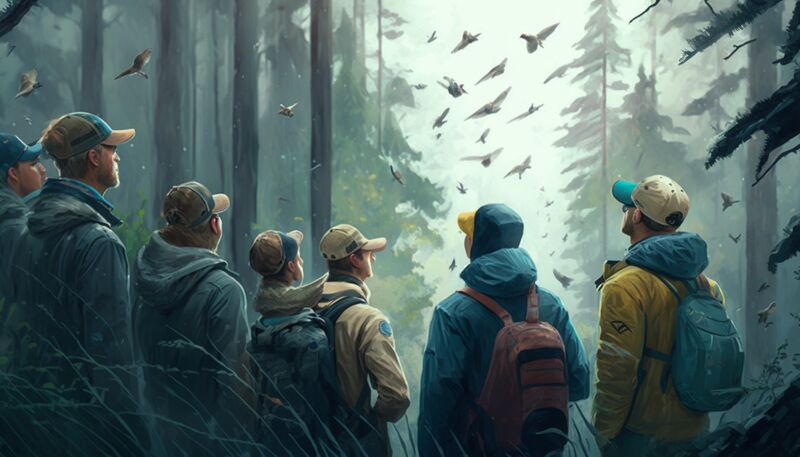
Birdwatching in Groups is a great way to share knowledge
5. Practice Birding by Ear
Identifying birds by their calls and songs is an important skill for any birder. Spend some time learning the calls and songs of the birds in your area.
Once you become familiar with the calls and songs of different bird species, you can use this knowledge to identify birds even when you can't see them. This skill is particularly useful in dense foliage or other areas where birds are difficult to spot.
To practice birding by ear, start by learning the most common bird songs in your area. You can find recordings of bird songs online or in birding guides. Once you're comfortable with the most common songs, try to identify other bird songs you hear while birdwatching.
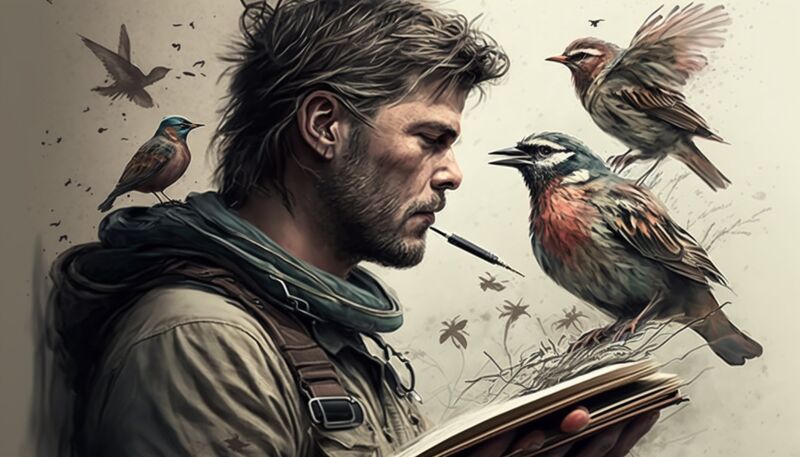
Keep listening and learning
6. Use Your Senses
When birdwatching, it's essential to use all your senses to identify birds. Pay attention to the sounds, colors, and movements of the birds you see. Different bird species have distinct colors and markings that can help you identify them, even from a distance.
Some birds are easier to identify by their calls or songs than by their appearance. Other birds may be easier to spot by their movements, such as the way they fly or hop around on the ground.
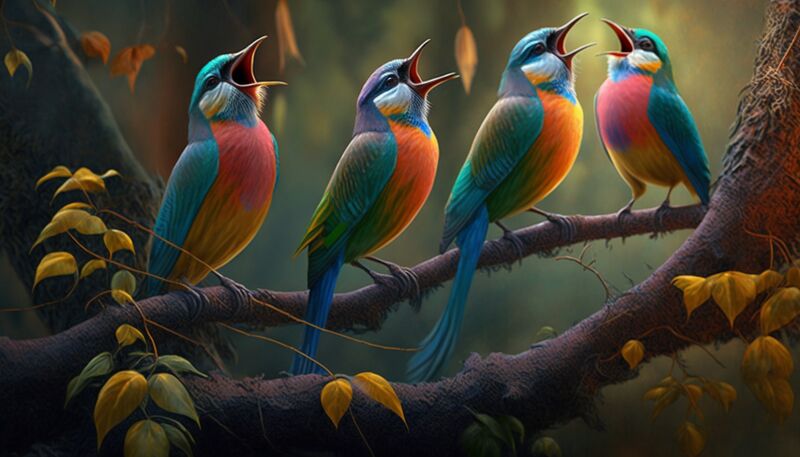
Sometimes birds are brightly coloured and sing loudly - use all your senses when birding
7. Learn About Migration Patterns
Many bird species migrate from one area to another at different times of the year. Understanding bird migration patterns can help you locate and identify different bird species throughout the year.
In some areas, bird migration is a seasonal event that can be a spectacular sight to see. Birdwatchers can often observe large flocks of migrating birds as they pass through their area. Knowing when and where to look for migrating birds can help you plan your birdwatching trips and improve your chances of seeing different species.

Birds migrate vast distances over the ocean every year
8. Respect Birds and Their Habitat
Birdwatching is an activity that should be enjoyed while respecting birds and their habitat. When birdwatching, it's important to avoid disturbing birds or their habitats. Avoid getting too close to nesting birds, and never disturb their nests or eggs.
Additionally, it's important to be respectful of other birdwatchers and nature enthusiasts. Avoid making excessive noise or littering, and always follow local rules and regulations.
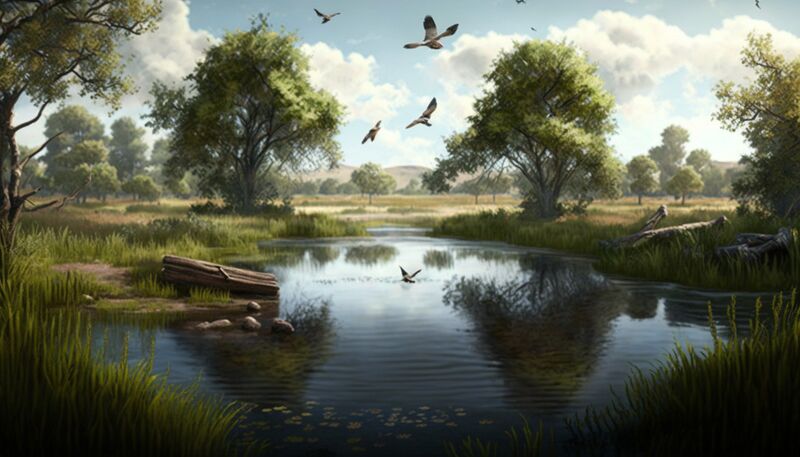
Birding habitats are some of the most beautiful out there
9. Record Your Sightings
Keeping a birding journal or using a Birding App is a great way to record your sightings, observations, and experiences. In your journal, you can record the date, location, and species of the birds you observe. You can also record notes about their behavior, habitat, and other interesting observations.
Over time, your sightings can become a valuable resource for tracking changes in bird populations, migration patterns, and other trends. You can also use your journal to plan future birdwatching trips and identify areas where you're most likely to see certain species.

Keep track of the birds you have seen to help guide your way
10. Never Stop Learning
Finally, the most important tip for being a brilliant birder is to never stop learning. Birdwatching is a never-ending journey of discovery, and there is always something new to learn and discover.
Read books, attend birding workshops, and take advantage of opportunities to learn from more experienced birdwatchers. By staying curious and continuing to learn, you can deepen your appreciation and understanding of the natural world and become a brilliant birder.

Keep birding and learning until you grow old
Now Get Out There
Birdwatching is a fascinating hobby that can provide endless opportunities for learning and discovery. By following these tips, you can improve your birdwatching skills, identify more species, and deepen your understanding and appreciation of the natural world. Remember to stay curious, keep learning, and enjoy the beauty and diversity of the birds around you.
